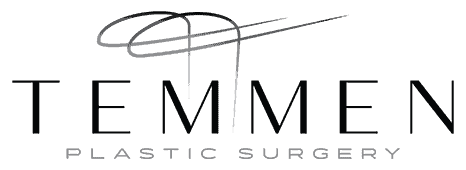 If you are pregnant, or even just considering pregnancy, it’s likely that everyone you’ve spoken to has an opinion, solicited or not, on stretch marks! Likely, those women that got stretch marks during pregnancy want to share their battle stories of the how, when, and why they got these “badges of honor” or “tiger stripes.” Even more likely, those women that didn’t get pregnancy stretch marks probably have an exhausting array of home remedies, cures, and potions for preventing and treating pregnancy stretch marks.
If you are pregnant, or even just considering pregnancy, it’s likely that everyone you’ve spoken to has an opinion, solicited or not, on stretch marks! Likely, those women that got stretch marks during pregnancy want to share their battle stories of the how, when, and why they got these “badges of honor” or “tiger stripes.” Even more likely, those women that didn’t get pregnancy stretch marks probably have an exhausting array of home remedies, cures, and potions for preventing and treating pregnancy stretch marks.
Well, if you want real, accurate answers to your pregnancy stretch mark questions, look no further… Dr. Traci Temmen is a female, board certified plastic surgeon at the Plastic Surgery Center of Tampa specializing in women’s health issues, skin care, mommy makeovers, tummy tucks, and liposuction in Tampa, Florida. She has the answers to your most personal and pressing pregnancy questions as they relate to your “pre-baby” and “post-baby” body!
What Are Stretch Marks?
Stretch marks are reddish-purple linear scars that form on expanding skin, often during periods of rapid childhood growth, weight gain, or pregnancy. Stretch marks are most often found on the breasts, abdomen, and thighs of women, and on the shoulders, back, and abdomen of men. Stretch marks are dark red or purple when they first appear, but generally fade to a silvery hue or a color slightly lighter than the surrounding skin, within several months to one year. Stretch marks are caused by tearing of the dermis, the layer of skin just beneath the outermost layer of skin, the epidermis. Tears in the dermis result in a loss of skin thickness and epidermal support, causing the characteristic thin, depressed, and ridge-like appearance of stretch marks. It is thought that stretch marks are also influenced by hormonal changes that occur during pregnancy, hormone replacement therapy, and possibly body building.
What Causes Pregnancy Stretch Marks? Who is Most Likely to Get Stretch Marks?
While genetics plays a key role in determining who will get stretch marks, there are other factors that can predict who will or won’t get stretch marks during pregnancy.
Genetics– A woman’s genes help determine the skin’s ability to withstand the stretching that causes stretch marks. Thus, if your mother got stretch marks during pregnancy, you are more likely to get pregnancy stretch marks, and vice-versa. Similarly, women that already have stretch marks on the breasts or thighs as a result of growth spurts during puberty are more likely to develop stretch marks on the abdomen during pregnancy.
Body Mass Index– Women with a high body mass index, a weight to height ratio used to determine healthy weight ranges, are more likely to get stretch when they become pregnant. A pre-pregnancy BMI greater than 25 is considered over-weight and is associated with a higher risk of developing pregnancy stretch marks.
Pregnancy Weight Gain– For women of normal weight (i.e. BMI between 18.5 and 25), a healthy weight gain during pregnancy is between 25 and 35 pounds. Gaining more than the recommended weight during pregnancy increases the chance of developing stretch marks. Specifically, weight gain over 33 pounds and a higher end-of-pregnancy BMI has been associated with a higher likelihood of developing pregnancy stretch marks.
Age– When it comes to health and beauty, there are few times when advancing age has a protective effect. However, when it comes to developing pregnancy stretch marks, older women, specifically those over 35 years old, have a much less chance of developing stretch marks than younger women. Teenagers and women in their early 20’s have a nearly 90% risk of developing stretch marks, while women in their late 30’s or early 40’s have only an approximately 30% risk.
Abdominal Girth– Because stretch marks are a result of excessive tension placed on the skin’s dermis, it should come as no surprise that the bigger a woman’s abdomen gets during pregnancy, the higher her risk of developing abdominal stretch marks. It has been suggested that abdominal girth greater than 106 cm (approximately 42 inches) at the end of pregnancy was associate with a higher risk of abdominal stretch marks than those with an abdominal girth of 100 cm (about 39 inches) or less.
Baby-Related Factors– Finally, twin pregnancy and higher neonatal birth weight are also linked to the development of stretch marks.
How do You Prevent Pregnancy Stretch Marks?
Unfortunately, there are no magic potions, lotions, creams, or powders that can prevent stretch marks during pregnancy. However, there are some basic things every woman can do to decrease her risk of developing pregnancy stretch marks and to feel more comfortable in her newly expanding skin while pregnant. Most importantly, starting pregnancy within a healthy weight range and limiting weight gain during pregnancy can decrease the risk of developing stretch marks. Ensuring that your body is well hydrated and has the nutrients and vitamins necessary to resist dermal tearing is also important to prevent stretch marks. Thus, drinking enough water and eating a healthy diet rich in vitamin C, vitamin E, zinc, and silica, all of which help form collagen, may help your body resist the dermal tearing that results in stretch marks. Finally, while applying a daily moisturizer or oil to the skin will not prevent stretch marks, as these topical treatments only effect the outermost layer of skin, a good skin care routine will help your skin feel more supple and less itchy as it stretches to accommodate a growing baby.
What Can be Done to Treat or Remove Stretch Marks?
Once present, there is no 100% effective, non-surgical method to remove stretch marks from the skin. Fortunately, given enough time, most stretch will fade to a light color and become less noticeable. Minor improvements in the appearance and texture of skin affected by stretch marks can be achieved with laser treatments and fractional laser resurfacing, but results and patient satisfaction scores vary widely.
Surgical removal of the loose, scarred skin affected by stretch marks is the gold standard of treatment options. Because most pregnancy stretch marks occur on the lower abdomen, a tummy tuck, which removes and tightens the skin below the belly button, is the treatment of choice when it comes to getting your pre-baby body back. Similarly, as many women also develop stretch marks on their breasts, resulting in deflated and sagging breasts, a breast augmentation and/or breast lift is a common procedure for women who want to regain the full and firm breasts of their youth. This combination of procedures, a tummy tuck and breast augmentation and/or breast lift, is often called a “mommy makeover” because it corrects the two areas of a woman’s body most severely affected by pregnancy in a single surgical setting!
Dr. Traci Temmen understands the physical and emotional toll that pregnancy can have on a woman’s body, sense of self, and self-confidence. Dr. Temmen’s patients find that her willingness to listen and ability to customize her surgical plan to meet their needs is key to their fantastic postoperative results and overall happiness. If you want to remove your pregnancy stretch marks and are considering a tummy tuck, breast augmentation, breast lift, or mommy makeover procedure, contact Dr. Temmen and her staff at Temmen Plastic Surgery. Feel free to call (813) 877-3739 for a free mommy makeover consultation today!



 About Dr. Temmen
About Dr. Temmen Virtual Consultation
Virtual Consultation Testimonials
Testimonials Blog
Blog